In this article:
The inner lining of the uterine cavity is made of a tissue known as the endometrium.
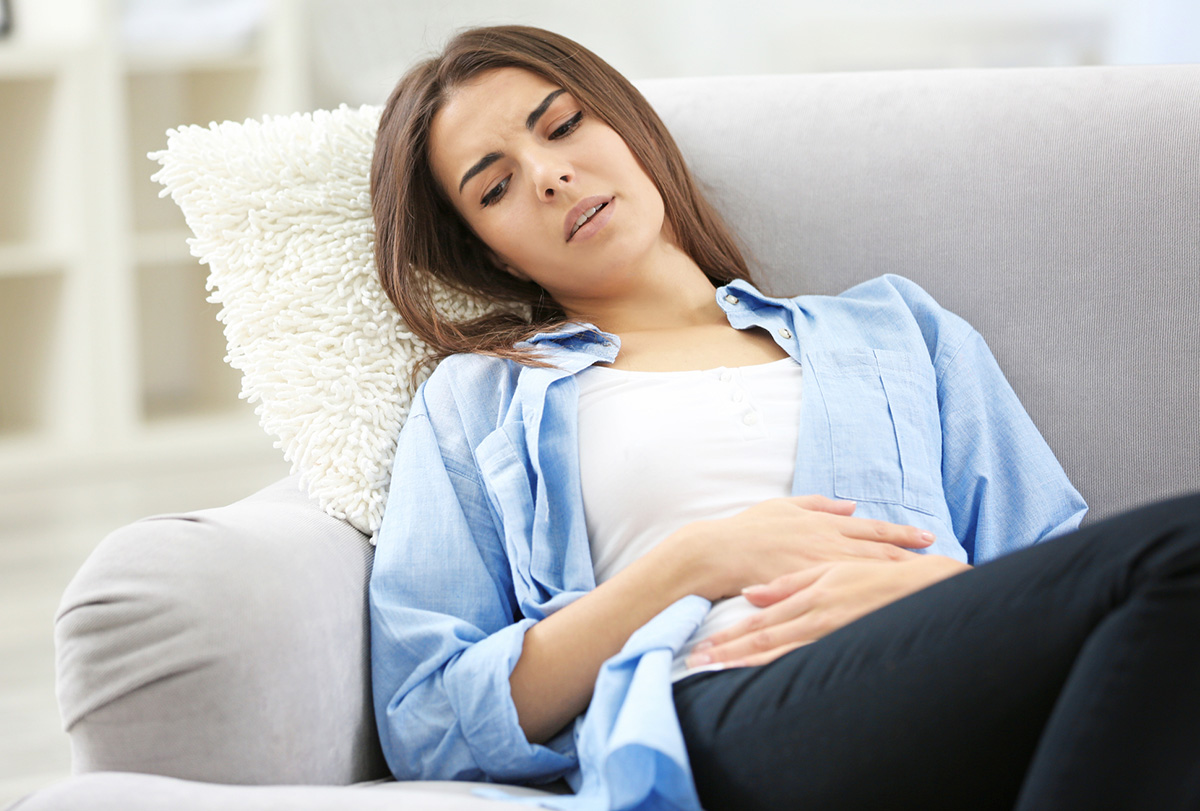
The endometrium sometimes grows out of the uterus, leading to a condition called endometriosis. Endometriosis may cause pelvic pain, heavy periods, infertility, and other symptoms.
In this condition, the endometrium grows on other organs in the pelvic region such as the bladder, ovaries, kidney, abdominal scars, fallopian tubes, or bowels. Rarely, it can also grow in some other areas of the body. (1)
This article will present a few common home remedies for endometriosis.
Home Remedies for Endometriosis
The most effective ways to treat endometriosis are surgical procedures and other methods of conventional treatment. However, these surgeries often tend to have side effects and are costly.
Hence, many women resort to trying natural remedies, which may not cure the condition but help manage its symptoms.
Note: Do not stop any medical treatment before consulting your doctor.
1. Sitz bath therapies
Sitz baths are one of the effective natural treatments for any pain or cramp in the body.
Many naturopathic healers recommend a combination of cold and hot sitz baths to alleviate the symptoms of endometriosis. Soak in a hot bath and then a cold bath to help decrease cramps and inflammation. (2)
How to use:
- Fill 2 bathtubs – one with cold water and the other with hot water.
- Add 5–6 drops of rosemary or lavender essential oil to each tub.
- Soak in the hot bath for 5 minutes and then in the cold bath for 2 minutes.
- Repeat 4–5 times for best results.
2. Use castor oil
Castor oil can help eliminate toxins from your body and also soothe your pelvic muscles. It can help reduce pain and inflammation caused by endometriosis. (3)
How to use:
- Mix 7–8 drops of lavender oil in ¼ cup castor oil.
- Soak a clean washcloth in this oil mixture and microwave it for a few seconds till it becomes warm.
- Place this warm cloth on your pelvic region and place a hot water bottle on top.
- Remove after 5–10 minutes.
Note: Be careful not to overheat or scald your tummy. Do not try while on your period.
3. Sip on a cup of ginger tea
Ginger has strong anti-inflammatory properties that can help provide relief from cramps. It has also been known to be effective in treating nausea that some people experience with endometriosis. (4)
How to use:
- Boil a piece of grated ginger in 2 cups of water.
- Strain this tea and add some honey to taste.
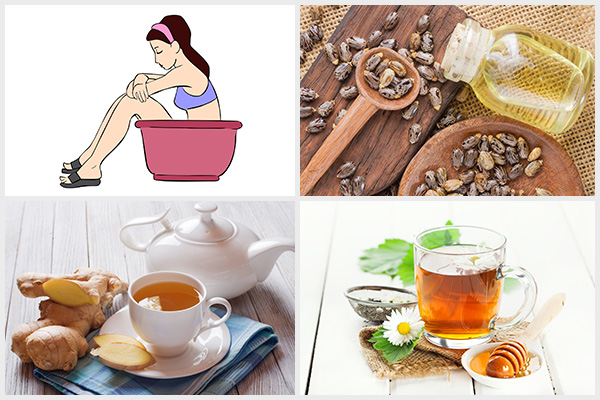
4. Try chamomile
Chamomile is also known for its strong anti-inflammatory properties and can alleviate PMS symptoms. Some recent studies have shown that chamomile may decrease endometriosis pain as well. (5)
How to use:
- Boil 2 teaspoons of dried chamomile in a cup of water.
- Strain and add some honey before drinking.
5. Drink Motherwort tea
Motherwort (Leonurus cardiaca L.) is a medicinal herb that was widely used in Asian traditional medicine to treat painful periods. (6)
It is an ancient remedy for many hormone issues faced by women. It also has antioxidant and anti-inflammatory agents that can reduce pain and may help provide relief from endometriosis. (6)
How to use:
- Add 1 teaspoon of dried motherwort to a cup of hot water.
- Drink this tea once a day.
Note: Avoid this herb if you are taking sedating medications.
6. Consume wild asparagus
Wild asparagus is an ancient Ayurvedic remedy and can help increase folic acid levels in the body. This helps treat anemia associated with heavy periods and also treats endometriosis caused by folic acid deficiencies. (7)
The vitamin E present in wild asparagus also helps provide relief from pain.
How to use:
- Mix 1 teaspoon of asparagus powder in a glass of warm milk.
- Drink it once a day for best results.
7. Pelvic massage with lavender oil
Essential oils such as lavender oil can have a soothing effect on the pelvic muscles. Hence, massaging your lower stomach with these oils can lower pain. (8)
How to do:
- Lie on your back and apply some oil to your stomach.
- Massage with your hands in circular motions for 5–10 minutes.
Note: Do not do this massage during your menstrual cycle.
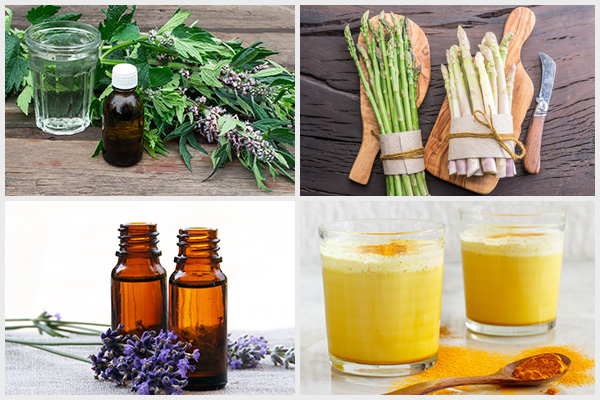
8. Consume turmeric
Turmeric contains an active compound called curcumin, which is beneficial in reducing inflammation and pain. It can help decrease pain in patients suffering from endometriosis. (9)
How to use:
- Add 1 teaspoon of turmeric to a glass of warm milk or water.
- Drink this once a day.
9. Use flaxseeds
Flaxseeds are rich in omega-3 fatty acids and can help resolve issues with hormonal imbalance. (10) They can also help your body detox to provide relief from pain.
How to use:
- Soak some flaxseeds in water overnight. Drink this water in the morning.
- You can also add powdered flaxseeds to a glass of warm water and drink it.
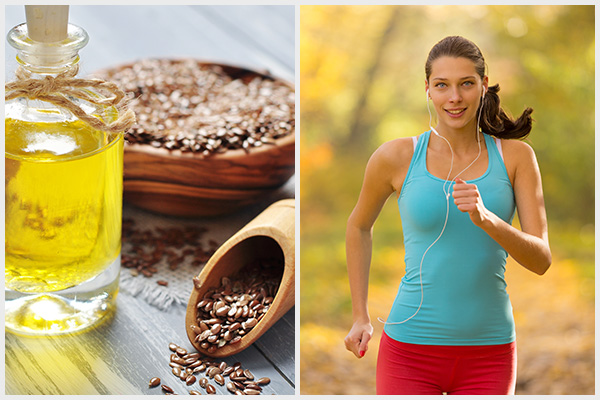
10. Exercise regularly
Endometriosis may cause weight gain in many people. This may be an unfortunate side effect of medication or hormone therapy. Hence, it is important to exercise regularly and increase physical activity to avoid becoming overweight or obese. (11)
Regular exercise can help decrease mental stress, increase energy levels and blood circulation, and reduce estrogen production. Estrogen is associated with an increase in endometriosis lesions.
Dietary Changes to Manage Endometriosis
You may need to make some dietary changes to alleviate the symptoms of endometriosis:
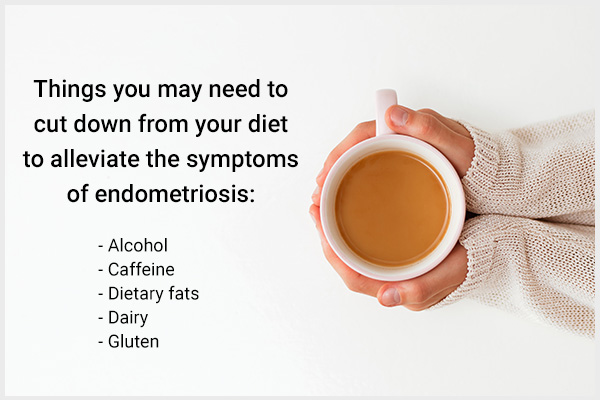
- Refrain from drinking alcohol – Alcohol consumption can increase estrogen levels in the body. Estrogen may contribute to an increase in endometriosis lesions.
- Avoid caffeine – Caffeine is an inflammatory compound and can cause pain and inflammation in the pelvic area.
- Be mindful of dietary fats – Trans fats and palmitic acid have been linked to increased risks of developing endometriosis. Not all fats are bad though, as omega-3 fatty acids have an anti-inflammatory effect on the body.
- Limit dairy – Dairy may increase your risk of developing endometriosis due to the high amount of saturated fats in it.
- Stay away from gluten – Several studies have shown that eliminating gluten from your diet can help curb the spread of endometriosis.
Lifestyle Changes to Alleviate Endometriosis Symptoms
The following lifestyle changes can help reduce the symptoms of endometriosis:
- Reduce consumption of red meat or processed meat.
- Increase exercise and physical activity.
- Reduce mental stress.
- Sage oil, fennel oil, rosemary oil, etc., are some essential oils that can be used in aromatherapy for the treatment of endometriosis.
- Avoid homogenized milk.
- Try to drink filtered water or fresh spring water if possible.
- Avoid smoking or drinking alcohol.
Most-Asked Questions About Endometriosis
What causes endometriosis?
Retrograde menstrual flow is the most likely cause of endometriosis. Some of the tissue shed during the period flows through the fallopian tube into other areas of the body, such as the pelvis.
Because endometriosis runs in families, it may be inherited in the genes. (12)
What is the average age of onset of endometriosis?
Endometriosis can happen in any girl or woman who has menstrual periods, but it is more common in women in their 30s and 40s. (12)
What are the most common signs and symptoms of endometriosis?
Pelvic pain, painful menstruation, irregular periods, and infertility are common symptoms. In some patients, the large intestines, bladder, etc., are also affected, causing painful defecation, bloating, or painful urination. (12)(13)
How is endometriosis diagnosed?
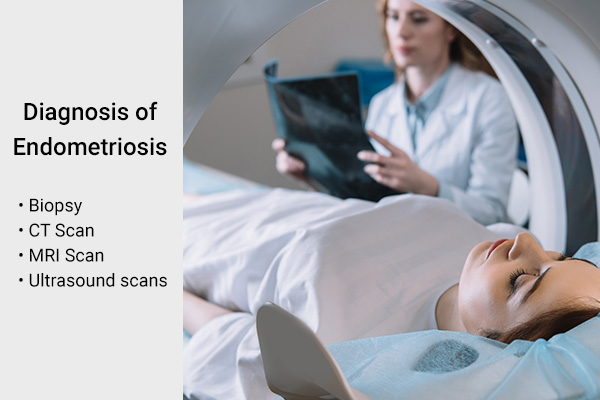
The diagnosis of endometriosis is usually done by a doctor by asking about your medical history and symptoms. Tests and procedures may be done such as:
- Biopsy
- CT scan
- MRI scan
- Ultrasound scans
The doctor will look for adhesions, scars, and any other abnormalities in the pelvic region.
Is there a classification for endometriosis?
The American Society for Reproductive Medicine classifies endometriosis into four major categories depending on adhesions, implants, etc.:
- Stage I: Minimal endometriosis
- Stage II: Mild endometriosis
- Stage III: Moderate endometriosis
- Stage IV: Severe endometriosis
What is the treatment for endometriosis?
Most endometriosis treatments revolve around excising the implants and preserving fertility in young female patients. The presence of adhesions, fallopian tube obstructions, and unbearable pelvic pain are some factors that can make you a candidate for surgery.
Nonsteroidal anti-inflammatory drugs (NSAIDs) are painkillers used to control the painful symptoms of endometriosis. In some patients, other drugs and some surgical procedures may also help provide relief from these symptoms. (12)
Note: Hysterectomy should only be performed in patients who have unbearable or incurable pain and have already had children.
Final Word
Endometriosis can be a distressing situation to go through. It can cause pain, heavy menstrual flow, infertility, and other issues.
If you or anyone you know is suffering from this condition, remember to seek support from family, friends, or support groups. If your symptoms do not improve even after trying all of the above tips, you should consult a doctor for advice on your options.
- Was this article helpful?
- YES, THANKS!NOT REALLY


